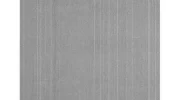What are High-Fiber Foods? |Top 6 Benefits of High-Fiber Foods. Do you know what high-fiber foods are? There is no doubt that fiber is an essential nutrient for maintaining regularity, reducing cholesterol levels, and improving overall health.
Healthy diets should include it. You will also feel fuller for longer periods, in addition to maintaining a healthy weight.
Introduction:
You should add high-fiber foods to your diet because they provide essential nutrients, help you feel fuller for longer, and can improve digestion. High-fiber foods can help you stay full for longer and even lower your cholesterol levels. When you choose from such a large variety of delicious choices, high-fiber foods will improve your health in an easy and tasty manner.
What is High Fiber Foods?
Plant-based foods such as fruits, vegetables, legumes, and whole grains are high in fiber, a type of carbohydrate. Fiber is found in these foods. As a component of a healthy diet, it assists in promoting regular bowel movements, reducing constipation risk, and maintaining a healthy.
Benefits of High-Fiber Foods
A diet high in fiber has several health benefits, including:
Helps with weight management
A diet high in fiber can help you feel fuller for longer, which can contribute to weight loss.
Improves digestion
A diet rich in fiber improves digestion and prevents constipation by bulking up the stool and moving it through the intestines.
Lowers cholesterol
The soluble fiber in foods binds with cholesterol in the digestive system and causes it to be excreted from the body.
Reduces risk of certain diseases
A high-fiber diet has been shown to reduce the risk of heart disease, stroke, and certain types of cancer.
May improve blood sugar control
Studies have shown that people with diabetes can improve their blood sugar control by eating a high-fiber diet.
May reduce the risk of developing certain digestive disorders
The consumption of high-fiber diets has been associated with a reduced risk of developing conditions such as diverticulitis and hemorrhoids.
Tips for Adding More Fiber to Your Diet:
Here are some tips for adding more fiber to your diet:
Choose whole grains instead of refined grains:
There is a higher concentration of fiber in whole grains, such as whole wheat bread and brown rice, compared with refined grains, such as white bread and white rice.
Eat a variety of fiber-rich fruits and vegetables:
A variety of fruits and vegetables are excellent sources of fiber. Make sure you include leafy greens, berries, and root vegetables in your daily diet.
Include beans and legumes in your diet:
The fiber-rich beans and legumes, such as lentils and chickpeas, can be easily incorporated into soups, stews, and salads.
Add nuts and seeds to your meals and snacks:
Several nuts and seeds, such as almonds and chia seeds, have high fiber content that can be easily added to meals and snacks to provide an extra fiber boost.
Gradually increase your fiber intake:
The best way to increase your fiber intake is to gradually increase it over time. You should start by adding a few more grams of fiber to your diet each day and gradually increase as your body adapts.
Drink plenty of water:
Fiber absorbs water in the digestive system, it is particularly important to drink plenty of fluids when increasing your fiber intake to avoid constipation.
FAQs
How much fiber should I be getting each day?
There are various recommendations for fiber intake based on age and gender, but generally, adults should aim for 25-38 grams of fiber each day.
How can I add more fiber to my diet?
A variety of fiber-rich fruits and vegetables, beans and legumes, and nuts and seeds are all excellent ways to increase your fiber intake. Selecting whole grains as opposed to refined grains, eating a variety of fiber-rich fruits and vegetables, and adding nuts and seeds to your daily diet will increase your fiber intake. Initially, you should increase your fiber intake gradually so that your body can adjust properly.
Can high-fiber foods help with weight loss?
Weight loss is potentially possible with high-fiber foods. Fibers keep you feeling full and satisfied, which may help to reduce overeating and snacking between meals by preventing overeating.
Fibers can help stabilize blood sugar levels and reduce hunger by slowing down digestion. While a high-fiber diet may contribute to weight loss, it is important to remember that weight loss results from a complex interaction between diet, exercise, and other factors.
Conclusion:
The consumption of high-fiber foods is an essential part of a healthy diet, as they are a valuable source of vitamins and minerals, as well as being low in calories and fat. Eating high-fiber foods is important for controlling weight, preventing constipation, and reducing the risks of certain diseases. Consequently, high-fiber foods should be included in the diet regularly for optimal health.








